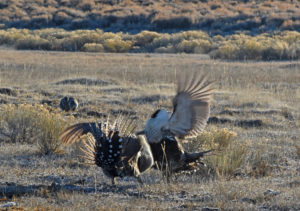For Immediate Release
October 31, 2018
Contact:
Laura Cunningham, Western Watersheds Project, lcunningham@westernwatersheds.org, (775) 513-1280
National Park Service Proposes Precedent-Setting Park Management Actions
POINT REYES, Calif. – The National Parks Service today released a General Management Plan amendment and draft Environmental Impact Statement for the popular and scenic Point Reyes National Seashore, proposing to update management guidance for more than 28,000 acres of park land, including all lands currently leased for ranching. Tule elk in the Drakes Beach area are proposed to be managed to keep them from interacting with cattle ranching. The comment period of only 30 days is unusually short for such a crucial process involving a National Park unit on the Pacific coast of California just north of the San Francisco Bay Area.
“Should private dairy and beef livestock operations be allowed to continue on Park Service lands, even after they agreed to and accepted buy-out funds decades ago, which gave generous life-leases to their operations?” said Laura Cunningham, California Director of Western Watersheds Project.
The National Park Service, apparently under pressure from local industrial agricultural groups, is leaning towards a preferred alternative for park management that would renew leases for cattle operations that are long past their legal due for retirement. The proposed action would renew ranch leases for 20 years. Native tule elk would be “hazed” out of cattle pastures, or “lethal methods” could be used to keep elk out of livestock areas.
“This is simply unacceptable for a National Park unit, and sets a bad precedent for all other National Monuments and Parks,” Cunningham added.
Conservations groups support restoring Point Reyes National Seashore to a wild area for the enjoyment of visitors, who come to view tule elk herds, lush coastal prairies full of wildflowers, and other prairie wildlife such as bobcats and badgers.
Cattle grazing has degraded native communities and wildlife populations on Point Reyes National Seashore, spread invasive non-native weeds, and eliminated large swaths of native California plant communities and wetlands due to overgrazing, erosion, and improper manure management. Water quality in some creeks, lagoons, and beaches has suffered immensely.
“After studying the ecology of the Point Reyes Peninsula, and the coastal prairie remnants here, and impacts to native species and plant communities of dairy and beef livestock grazing, it is obvious that the ecological resilience of these park landscapes will be improved by removing livestock disturbance,” said Cunningham. “Rare species such as tule elk, tricolored blackbirds, and coho salmon will have a better chance to thrive with expanded ecological health in these ecosystems freed from industrial-scale cattle grazing.”
The conservation groups committed to commenting in detail on this General Management Plan amendment and the public is encouraged to as well.
Options in the amendment might allow ‘diversification’ of for-profit activities on National Park Service lands—growing alternative farm crops, increased poultry farming on park lands, and other alternatives.
Western Watersheds Project supports preserving and restoring the unique California coastal habitats for tule elk, wildlife and public enjoyment, not increasing commercial special interests on park lands.






